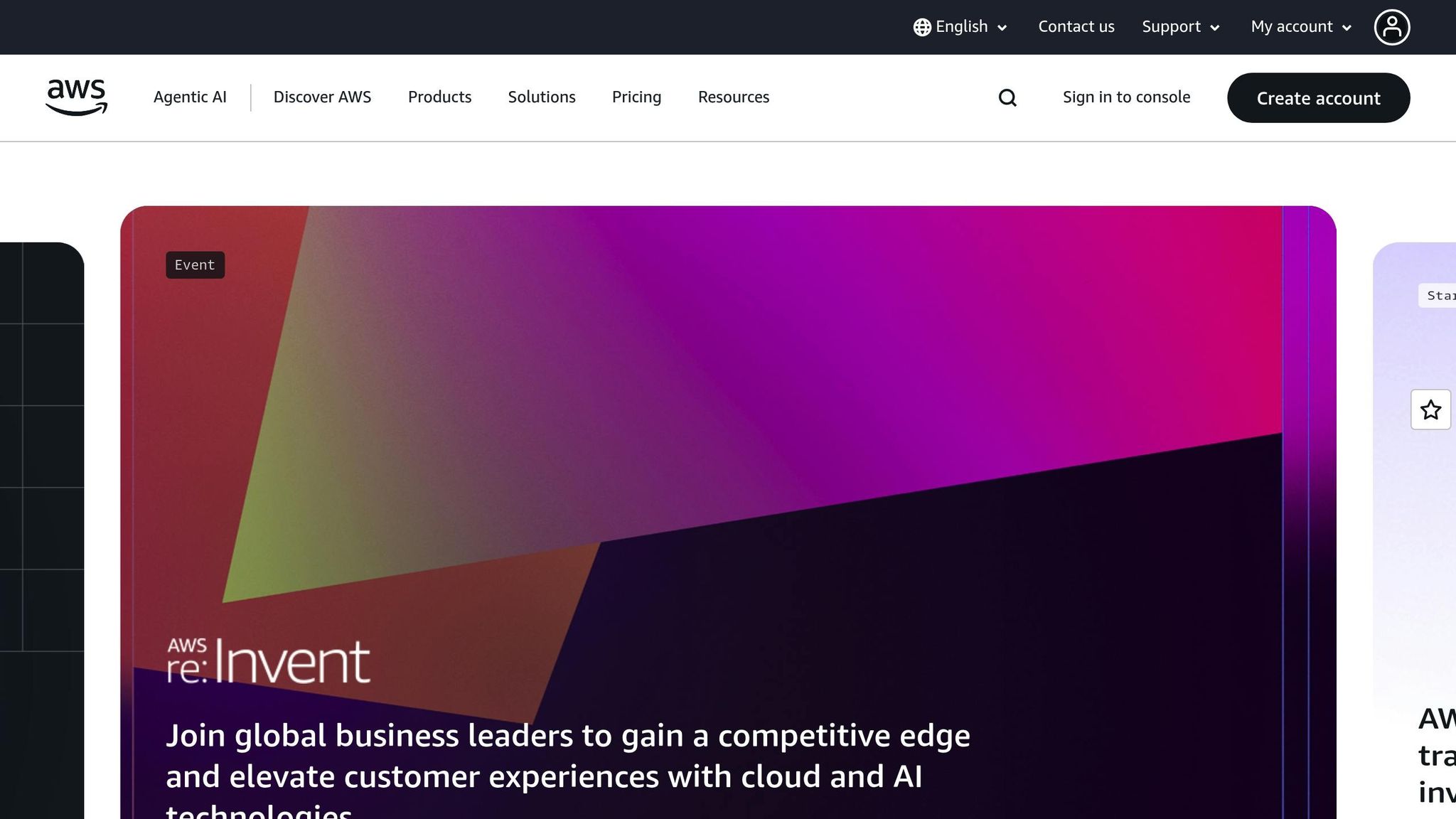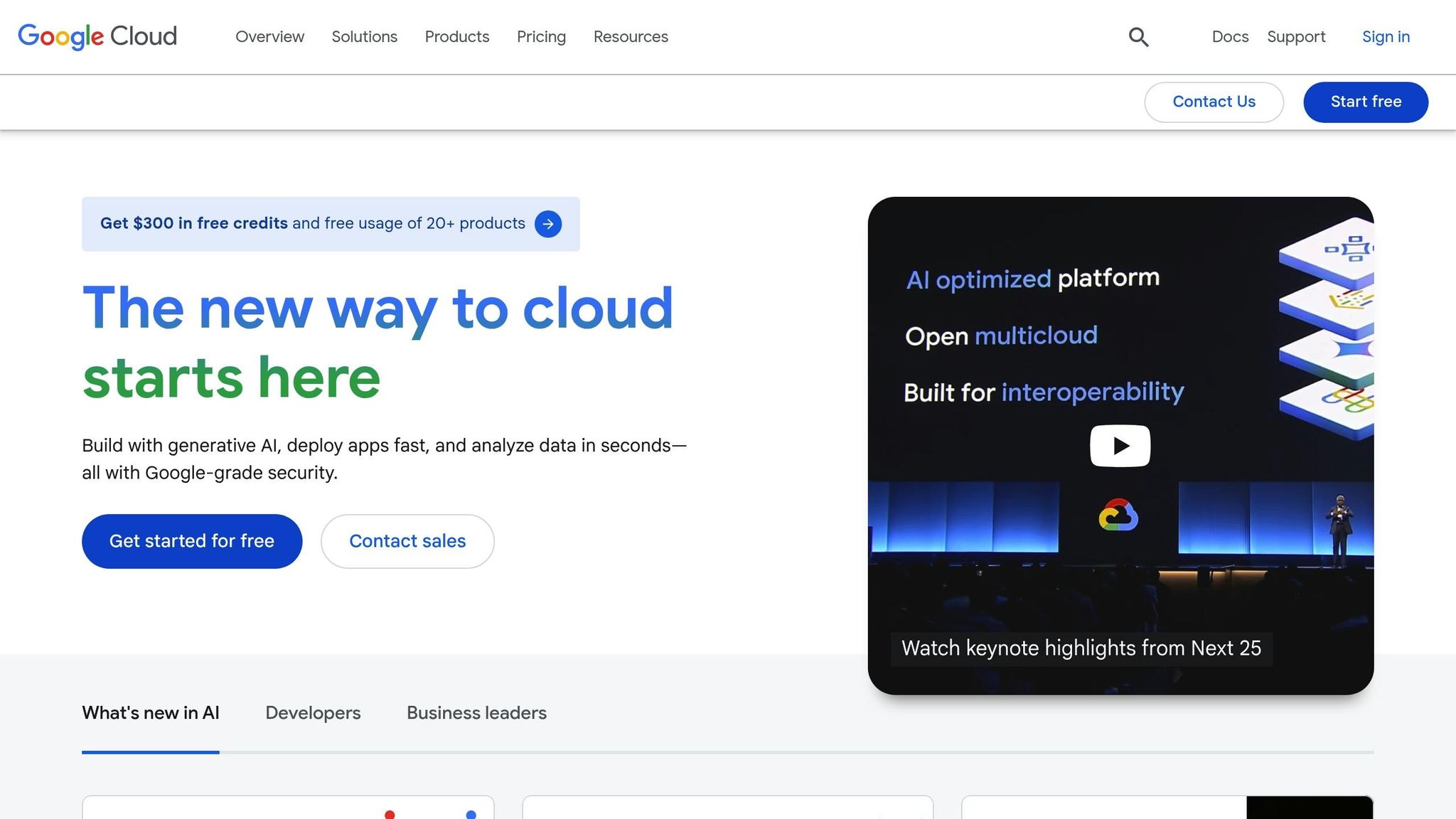Balancing cost and performance is the core challenge of optimising high-performance computing (HPC) workloads. Whether you're in pharmaceuticals, finance, or AI, cloud platforms like AWS, Azure, and Google Cloud offer scalable solutions. But choosing the right instance type and pricing model is critical to avoid overspending or underperforming.
Key takeaways:
- AWS: High computational power, flexible options like Spot and Reserved Instances, but pricing complexity can escalate costs.
- Azure: Strong integration with Microsoft tools and balanced configurations, though regional limitations may affect access.
- Google Cloud: Transparent pricing, custom machine types, and discounts, but its ecosystem is less mature compared to AWS and Azure.
For UK businesses, factors like exchange rates, data sovereignty, and regional availability add complexity. Careful planning, regular monitoring, and tailored strategies are essential to achieve the right cost-performance balance.
What Does it Cost to Run an HPC Server in the Cloud?
1. AWS HPC Instances

Amazon Web Services (AWS) offers a variety of instance families tailored for high-performance computing (HPC) workloads. Each family is designed to strike a balance between performance and cost, allowing UK organisations to align their specific workload needs - whether focused on intense computation, balanced processing, or memory-heavy applications - with the right instance type.
Here’s a breakdown of key AWS instance families to match different HPC demands:
- C6i Instances: Ideal for compute-heavy tasks like financial modelling or scientific simulations.
- M6i Instances: Designed for workloads requiring a balance of compute and memory resources.
- R6i Instances: Suited for memory-intensive applications such as in-memory databases and real-time analytics.
For machine learning, graphics processing, or workloads that rely on parallel computing, AWS also offers GPU-accelerated instances. These leverage advanced NVIDIA technology to provide the specialised performance needed for highly parallel tasks or graphics-intensive operations.
AWS doesn’t stop at just offering diverse instance types. It also boosts performance with advanced networking features. For example, the Elastic Fabric Adapter (EFA) enhances inter-node communication, which is crucial for applications like computational fluid dynamics or weather modelling where frequent data exchange between nodes is required.
Cost management is another critical factor. AWS provides several pricing models to help organisations optimise their budgets:
- Spot Instances: Great for fault-tolerant tasks, offering significant cost savings.
- Reserved Instances: Ideal for predictable, long-term usage.
- AWS Batch: Automatically scales resources based on workload demands.
Storage and data transfer costs are also important considerations. AWS offers scalable storage solutions for shared file systems and long-term archiving, while its pricing for data transfers reflects varying usage patterns and regional factors.
UK organisations can use these tools and features to strike the right balance between performance and cost. For tailored HPC workload optimisation, consider consulting Hokstad Consulting (https://hokstadconsulting.com). This AWS overview ties into broader HPC strategies discussed later.
2. Azure HPC Instances

Microsoft Azure, much like AWS, provides a range of powerful HPC solutions that aim to strike a balance between performance and cost. Azure's offerings include a variety of HPC-optimised virtual machines (VMs) tailored for tasks demanding high compute power and memory bandwidth. These options feature the HBv4, HBv5 (currently in preview), HC, HX, and GPU-enabled N-series [1][2][3][4].
Azure also integrates essential HPC capabilities into a streamlined solution designed for diverse use cases. Each series - whether it's the HBv4 or the GPU-enabled N-series - is specifically designed to meet performance benchmarks while keeping costs in check. This flexibility allows businesses to match their workload requirements with the right configuration, making it easier for UK organisations to fine-tune their cost-performance balance. These options provide a strong foundation for further comparison and analysis.
Need help optimizing your cloud costs?
Get expert advice on how to reduce your cloud expenses without sacrificing performance.
3. Google Cloud HPC Instances

Google Cloud Platform provides a range of compute-optimised instances tailored for high-performance computing (HPC) tasks, using C2 and C2D machine types. These leverage Intel Cascade Lake and AMD EPYC Milan processors to deliver strong per-core performance, offering organisations precise control over resources and costs.
C2 instances are designed for compute-heavy applications, supporting up to 60 vCPUs and 240 GB of memory. Meanwhile, C2D instances take it further, accommodating up to 112 vCPUs and 448 GB of memory. These options allow businesses to scale their HPC workloads efficiently while maintaining predictable performance.
For workloads with specific resource needs, Google Cloud’s custom machine types let you fine-tune CPU and memory configurations. This flexibility ensures you only pay for the resources you actually use, making it an ideal choice for HPC tasks that don’t fit neatly into standard instance sizes.
Cost efficiency is another highlight. With sustained use discounts, users can save up to 30% on extended workloads, while committed use discounts offer up to 57% savings for predictable, long-term usage. These discounts are particularly advantageous for UK organisations running continuous simulations or batch processing jobs.
Google Cloud also focuses on uptime and reliability. The Compute Engine’s live migration feature keeps workloads running smoothly during maintenance, reducing interruptions for lengthy simulations. For jobs that can handle occasional disruptions, preemptible instances offer up to 80% cost savings, making them a great option for fault-tolerant tasks.
When it comes to networking, the platform delivers consistent bandwidth and low latency through its custom network infrastructure. Additionally, placement policies help minimise delays between compute nodes, which is essential for parallel computing tasks that require tight coordination.
For UK businesses considering Google Cloud for HPC workloads, its transparent pricing model stands out. There are no hidden fees for data transfers within the same region, offering clear cost visibility. Combined with the flexibility of custom machine types and automatic discounts, this makes Google Cloud a strong contender for organisations aiming to balance cost and performance in their HPC operations. Next, we’ll explore the pros and cons of these solutions.
Advantages and Disadvantages
When it comes to choosing a cloud provider for high-performance computing (HPC), there are clear trade-offs to consider. Below, we break down the strengths and weaknesses of the major players.
AWS is known for its powerful computing capabilities and well-established ecosystem. Its HPC solutions come with pre-configured images that simplify deployment, making it a strong choice for demanding simulations. However, its pricing structure can be complex, and costs may escalate quickly.
Azure stands out for its seamless integration with Microsoft environments. It offers a good balance of performance and cost efficiency in its HPC solutions. That said, access to the highest-performing configurations may be limited in certain regions, potentially leading to latency issues for globally distributed teams.
Google Cloud takes a different approach with transparent pricing and innovative scaling options. Its custom machine types ensure you only pay for the resources you actually use, and built-in discounts make it appealing for workloads with fluctuating demand. However, its HPC ecosystem is still catching up to the maturity of AWS and Azure.
Here’s a summary of key features for comparison:
| Feature | AWS | Azure | Google Cloud |
|---|---|---|---|
| Cost structure | High cost, complex pricing | Cost-effective | Transparent and flexible |
| Computational capacity | High and robust | Strong and scalable | Flexible configurations |
| Network performance | Consistent low latency | High-performance options | Reliable infrastructure |
| Global availability | Extensive data centres | Broad regional coverage | Sufficient regional support |
While performance differences between these providers may be minor, factors like operational efficiency and total cost of ownership can have a significant impact. For UK organisations, network performance and data sovereignty are crucial considerations. Although all three providers offer UK-based data centres, the availability of specific services and instance types can vary by region.
UK businesses can turn to Hokstad Consulting for expert advice on optimising their HPC strategies. Their insights can help organisations navigate the complexities of cost and performance to find the best fit for their needs.
Summary
Getting the balance right between cost and performance is key when optimising HPC workloads. The analysis shows that while AWS, Azure, and Google Cloud all provide strong HPC solutions, their advantages differ significantly in terms of pricing structures, computational power, and operational complexity.
Dynamic pricing models can lead to considerable cost reductions. For example, reserved instances can cut costs by 30–60% compared to on-demand prices, and spot instances offer even steeper discounts, with savings of up to 91% on Google Cloud Platform [6]. However, these savings come with challenges, as they require meticulous workload planning and architectures built to withstand interruptions.
Instead of focusing solely on raw instance costs, UK businesses should evaluate price per CPU using workload benchmarks. This method often highlights that higher-priced instances may deliver better value, thanks to their superior performance when applied to specific workloads.
For organisations in the UK, regional factors are critical. Data sovereignty requirements may influence the choice of cloud providers, and network latency can affect performance, especially for teams working across different locations. Additionally, the availability of certain instance types varies by region, which can impact both costs and capabilities. These considerations highlight the need for ongoing adjustments to resource allocation as workloads and requirements evolve.
To maintain top performance, it’s important to regularly fine-tune instance sizes based on actual usage, implement automated scaling for fluctuating workloads, and audit non-production environments where hidden costs often build up. Successful HPC workload optimisation depends on constant monitoring and adapting to changes in workload patterns and the introduction of new cloud services.
Hokstad Consulting offers expertise in navigating these complexities. Their tailored HPC strategies and cloud cost engineering methods have helped companies cut cloud expenses by 30–50%, speed up deployments by up to 75%, and reduce errors by 90% through DevOps transformation [5]. With a focus on strategic cloud migration and automation, they ensure UK businesses can effectively manage the trade-offs between cost and performance, whether working with public, private, or hybrid cloud solutions.
FAQs
How can businesses in the UK address data sovereignty and regional availability when selecting a cloud provider for HPC workloads?
To tackle the issue of data sovereignty, businesses in the UK should focus on partnering with cloud providers that have data centres within the country. This ensures their operations remain compliant with local laws regarding data residency while protecting sensitive information.
When it comes to regional availability, opting for providers with multiple UK-based regions is a smart move. This allows businesses to deploy or migrate workloads within legally compliant areas, boosting both regulatory compliance and operational resilience. Plus, it provides access to high-performance computing (HPC) services designed to meet local requirements effectively.
How can businesses optimise HPC workloads on AWS, Azure, or Google Cloud to balance cost and performance effectively?
To manage costs effectively while maintaining performance for HPC workloads on cloud platforms like AWS, Azure, or Google Cloud, businesses can adopt a series of smart strategies. Start by right-sizing your resources - ensure your cloud setup matches the specific needs of your workloads. Opting for cost-efficient instance types, like spot or reserved instances, can significantly cut expenses without sacrificing performance. Using automated tools to monitor and manage cloud usage is another great way to keep costs under control.
Beyond that, fine-tuning configurations for each platform is key. For instance, consider optimising your storage solutions, using caching when it makes sense, and ensuring resources are allocated efficiently. Setting budget controls and cost threshold alerts can also help avoid unexpected overspending. By combining these measures, businesses can strike the right balance between cost and performance for high-performance computing in the cloud.
What should I consider when optimising HPC workloads for cost and performance across cloud platforms?
When running HPC workloads in the cloud, selecting the right HPC-optimised instance types is crucial. These specialised options, available from many cloud providers, are tailored for high-performance computing and can greatly improve both efficiency and scalability.
To keep costs under control, think about mixing different pricing models. For instance, Spot Instances can be a cost-effective choice for flexible workloads, while Reserved Instances work well for predictable, long-term needs. Spot Instances are often cheaper but come with the caveat of fluctuating availability. To ensure steady performance, it’s wise to balance them with On-Demand or Reserved Instances.
The key to success lies in understanding your workload’s unique requirements and pairing them with the most appropriate instance types and pricing models. This way, you can optimise both performance and cost.
